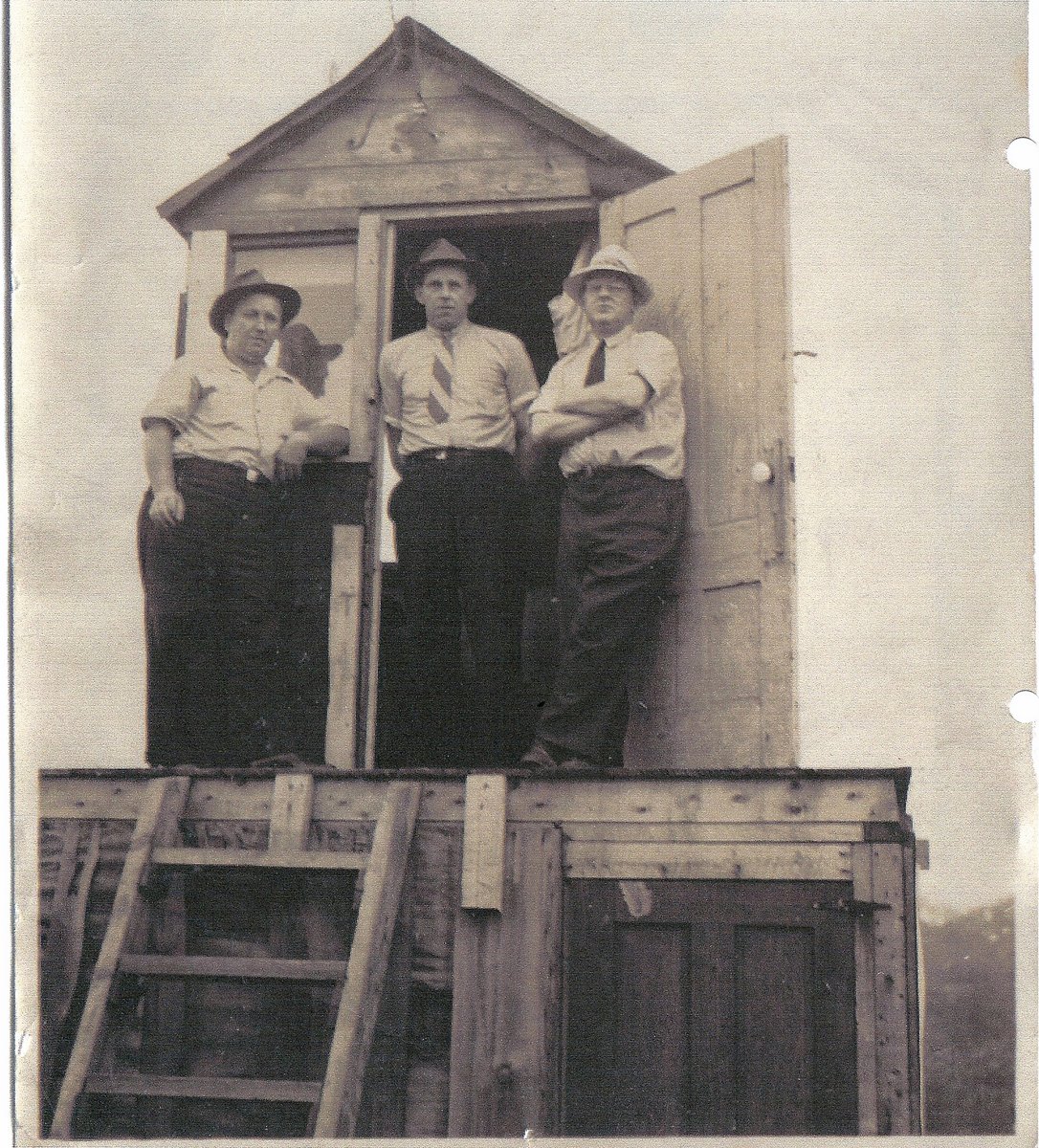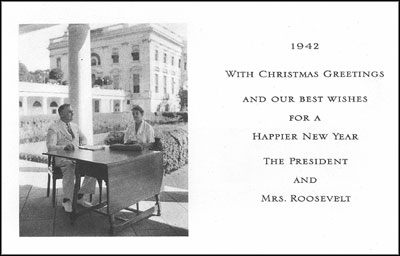
A July victory parade in front of the State Theatre and A and P in 1942.
1942 marked the beginning of U.S. involvement as a combatant in World War 2, a war which was just then going very badly for the Allies – the Germans had conquered continental Europe and Hitler still had hopes For a cross channel invasion of England, the only nation standing in Germany’s way of complete domination of Europe. Soviet forces in Russia were falling back against Germany’s onslaught in the Caucasus. Rommel’s Africa Corps was sweeping across northern Africa and the Japanese had taken the Philippines, rolled down the Malay Peninsula, bombed Australia, and attacked Burma in an offensive whose ultimate goal was England’s crown colonial jewel—India.


The sinking of the British destroyer HMS Trinidad is a good indication of how badly the war was going in the early months of 1942—a torpedo fired by the Trinidad at a Germany submarine during Russian convoy duty experienced a gyro problem, turned on the ship, and struck the Trinidad causing severe damage and the loss of 31 sailors. By the end of the year, however, the tide was beginning to turn. In August 1942 there were 28 Allied nations at war with Germany, Italy, and Japan, the Axis Powers. Cuba became number 29 on August 27, 1942, and given the problem sugar rationing was causing in the U.S., this may have been more significant than it at first appears. By the end of the year, the Battle of Midway and the Marines’ success at Guadalcanal had significantly changed the balance of power in the Pacific, Rommel was being pushed back in Africa, and, most significantly, the Russians were inflicting enormous casualties on the Germans both at Stalingrad and during the 1942 Russian winter offensive on the Eastern Front.
In the U.S., 1942 saw the adoption of the shameful policy of internment of American citizens of Japanese descent. Nonexistent threats ginned up by the media led to Congressional demands to “lock up” tens of thousands of loyal citizens—an act which was upheld by a spineless Supreme Court. It represented a failure at all levels of our democracy. Even Roosevelt’s most ardent supporters admit the internment was a serious blemish on his otherwise courageous and effective leadership of the country during the war.

The cost of the war was to a large extent funded by the average citizen through the purchase of War Bonds. Celebrities, war heroes and politicians were constantly on tour throughout the country selling the bonds. This advertisement appeared in the Advertiser in 1942 suggesting 10% of each paycheck be used to buy war bonds.
In sports, many athletes, including baseball’s Bob Feller and Ted Williams, enlisted early in 1942 and the professional leagues began to use teenagers, wizened retired ballplayers, and men who failed the draft physical to fill out the rosters. The Academy Award for Best Picture was given to “How Green Is My Valley” and Bing Crosby recorded “White Christmas.”

In the St. Croix Valley, the news was all war news. Much concern was expressed in the papers over local men serving in the Philippines and justly so. Norman Glidden’s family in Princeton expressed “grave concern” over Norman’s safety and Malcolm “Doc” Foster’s was only to receive word over a year later that he had been captured and survived the Bataan Death March. However, none of this uncertainty prevented dozens of local men from enlisting, including the indomitable Percy Fox, a hero of World War I and the Battle of Belleau Woods where he won the Croix de Guerre for heroism. Percy enlisted on January 2, 1942, less than a month after Pearl Harbor.
Many, of course, were drafted—an article in the Advertiser on March 4, 1942, announces the third draft lottery of 9 million men. The Advertiser regularly reported on men in the service; December 2, 1942, mentions Don Mitchell, Jack Chisholm, Frank Fenderson, Ollie Clark, and Herbie Johnson.

Frances Wallace, then Frances Culligan’s ration book 1942.
Rationing was big news—sugar was on the list early, coffee, which sold for 20 cents a pound in those days, not until December 1942. If you could get coffee, A&P Jane Parker donuts were 12 cents a dozen. Hoarding was illegal and widely condemned in the papers. By March 1942, a rationing board was operating—Dead River was given the right in March to buy one truck tire and tube and Martin Russell of Robbinston was allowed four truck tires. For reasons unknown, Calais was on the list of 19 places in Maine “likely to be raided by enemy bombers.” As a result, air raid shelters were set up in Customs, Unobskey’s Store, The Ford Garage, Penney’s, Fishman’s, Stewart Furniture, Grant’s, the State Theatre, and the hallway of the National Bank Building. Observation watchtowers were established on many high points in town and manned continually.

